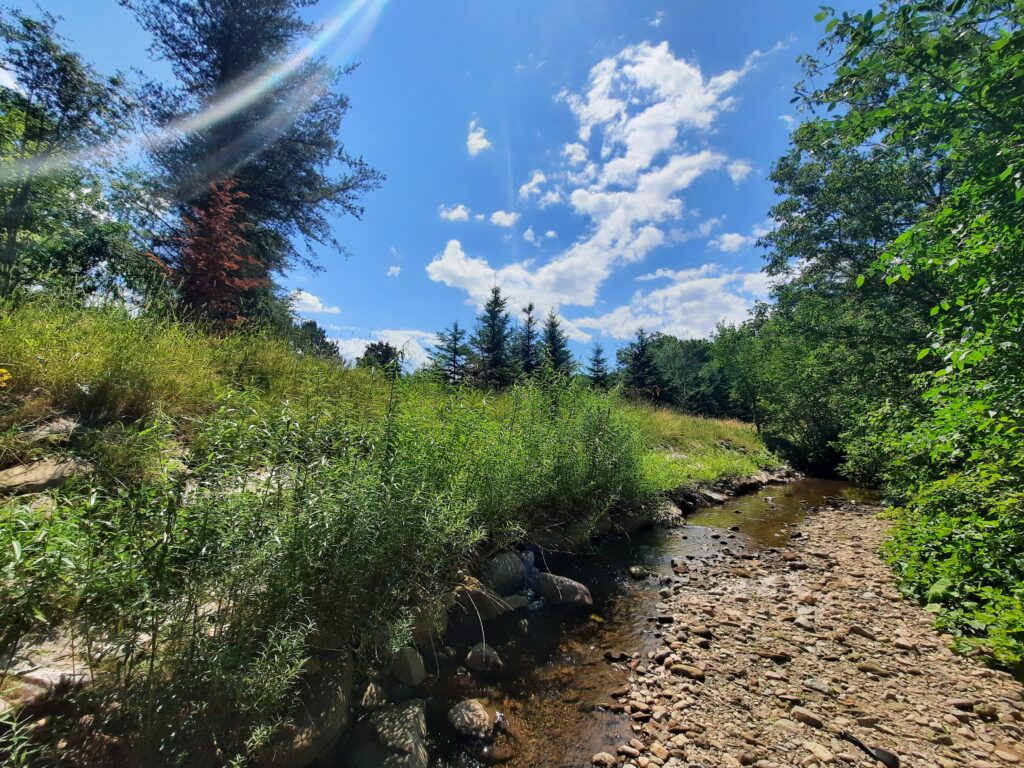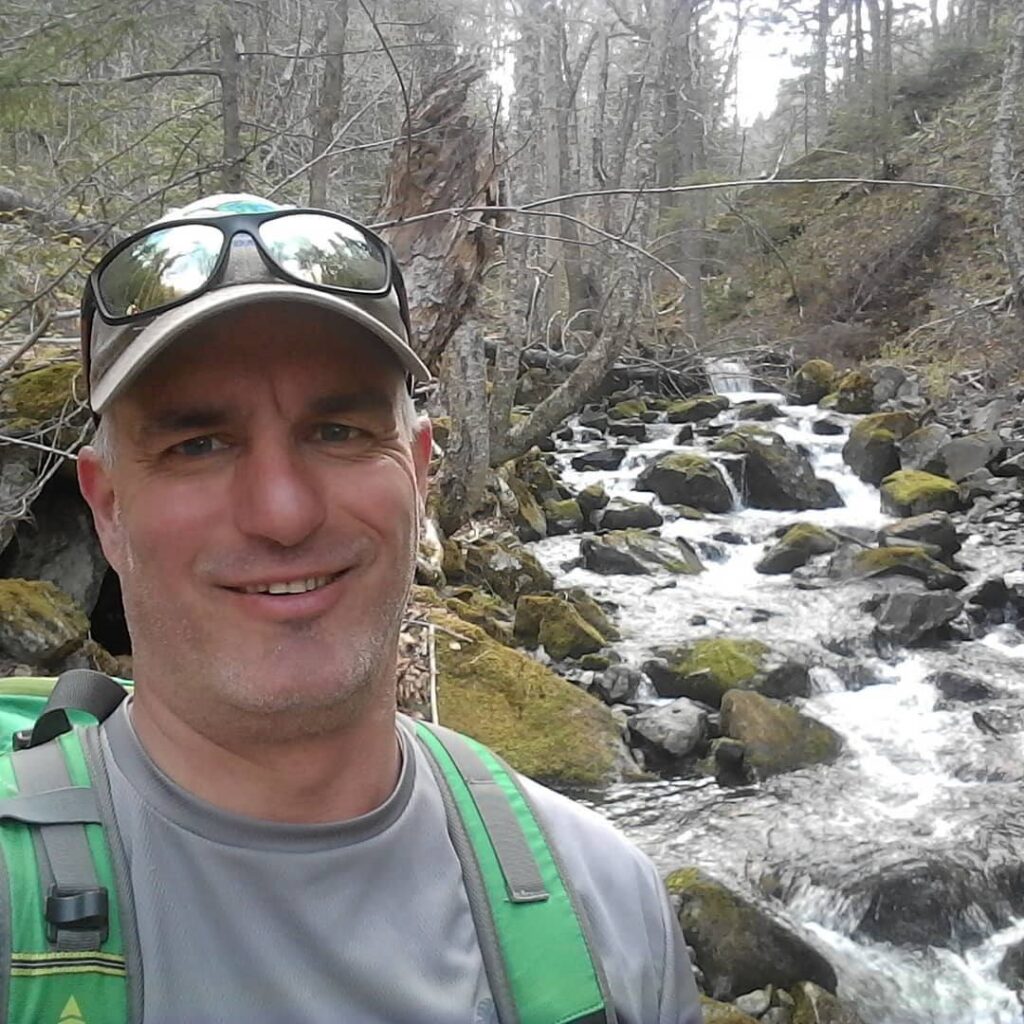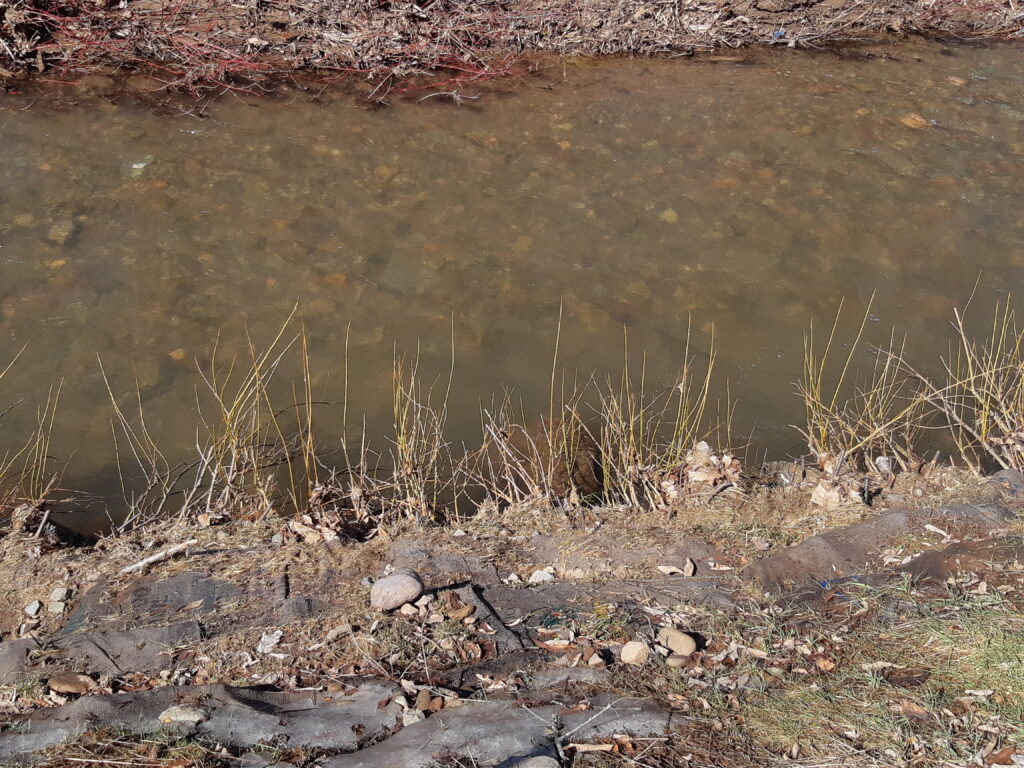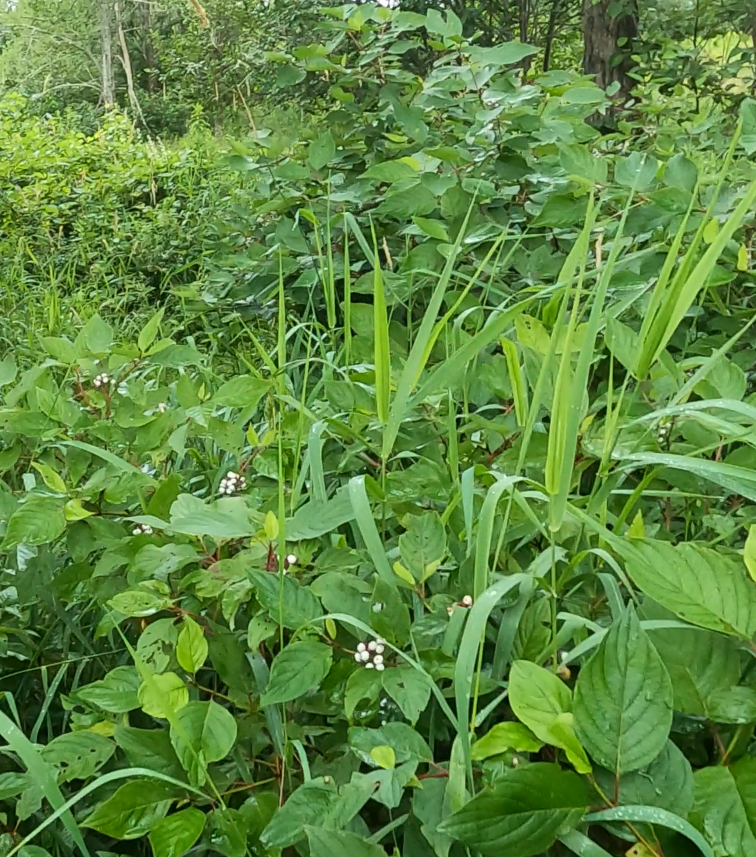Act Locally: How to make your yard more nature-friendly with native shrubs
You might know shrubs to be sturdy, practical accents to a garden or yard. But did you know they also help combat climate change and boost biodiversity?
The team at the Kennebecasis Watershed Restoration Committee (KWRC) sure do! Native shrubs are a core part of the organization’s work to restore near Sussex, N.B. (Their work is one of six projects supported by WWF-Canada’s Nature and Climate Grant Program, presented in partnership with Aviva Canada.)

This past field season alone, KWRC staff and volunteers planted approximately 12,000 shrubs — including native elderberry, chokecherry, dogwood and willow species — on degraded banks, so they’ve learned a lot about just how much shrubs can do.
We talked to Ben Whalen, KWRC’s Project Manager, about why shrubs are an effective nature-based climate solution, why bugs and critters love them, and how you can get these benefits on your own property.

Why are shrubs such an important part of KWRC’s work?
Right now, we — like everyone — are experiencing more intense rainfall events, due to climate change. We’re getting runoff rates that are well above what is normal in our watershed. That runoff moves quickly, and it needs lots of space. When it doesn’t find a healthy floodplain, it starts to erode the banks of the river.
We consider shrubs our first line of defense in bank stabilization. They grow quickly. They put in deep roots, which stabilize the soil and prevent erosion. That’s very important; when you have erosion along waterways, soil starts to run off, triggering processes that can release carbon from the soil into the atmosphere.
The roots of the shrubs, and the woody vegetation above the surface, can slow that runoff water — and all the debris and sediment in it — before it washes away. And because the roots grow very dense, they absorb nutrients that contribute to the creation of a carbon sink, as they hold carbon in their woody structures.
Are shrubs beneficial for animals, too?
Yes! Shrubs often have attributes, such as berry growth and flowers, that pollinators love. They grow lower to the ground, so they’re not as susceptible to high winds and other factors, which means bees and birds often gravitate towards them for habitat cover and for nesting. Also, small mammals, like squirrels, chipmunks and raccoons, use them to hide.

Your work focuses on habitats on and near rivers. What should people who live or own property on the water’s edge know about shrubs?
If you’ve got a home or property along a waterway, whether it is small or large, I can’t stress enough the importance of maintaining the vegetation along the shores. If you remove it all, you’re leaving your property susceptible to erosion, and it could leave you in a world of hurt. Many people are concerned about obstructing their views or blocking water access, but shrubs naturally grow low — like dogwood — and you can prune down those that grow taller.
Do you think shrubs can work their magic in other locations, too — even those far away from water?
For sure. Do you have a puddle in your yard that you’ve been wondering how to deal with? Or that you want to pretty up? Unless the soil is really rocky or gravelly, you can create a rain garden with some good shrubs there that will soak up that water. Even if you don’t have a wet spot, it’s well worth planting shrubs, even just to create habitats for pollinators and birds.
One day this past field season, our staff visited one of our rain gardens filled with shrubs and counted 41 Monarch butterfly chrysalids. Forty-one! We were dumbfounded. We had seen some butterflies, and we’d seen some caterpillars, but all of a sudden we had a slew of future butterflies that are going to exist simply because of what we’d planted. That is an extreme example, but people can absolutely get similar results in their own yards. And it doesn’t take a lot of space.

We’re sold! How should people choose what to plant?
You have to understand your soil conditions, and how wet it is. I would encourage anybody to create a relationship with their local nursery. They can help you to understand things like your soil pH and recommend plants that will thrive in your conditions. You also let them know how much you’d like to invest, both in terms of money and time. Some shrubs you can just put in the ground and walk away; others require a lot more maintenance.
How important is it to choose shrubs that are native to my area?
It’s very, very important. The biggest thing I want to warn people about is to do research to make sure they’re planting native shrubs. Some things labeled as native plants are not actually native to your area. That can create problems in the long term. For example, here in New Brunswick, we have problems with woodland angelica and Japanese knotweed — which are invasive species that gardeners introduced — because they make it difficult for our native vegetation to compete. There are many good resources online that can help you determine what is native to your region.
Any final advice for would-be shrub gardeners?
If at first you don’t succeed, don’t be scared to try and try again. Once you get your garden up and mature, and you get comfortable with the way it needs to be maintained, it can be very rewarding on so many levels.
Act Locally is a blog series about how you can apply the nature-based climate solutions used by our Nature and Climate Grant Program participants to your own life.
Read More: Nature and Climate Grant Program
Sowing change: How Canadian farmers are addressing the biodiversity and climate crises
Q&A: How agriculture can drive restoration
Act Locally: How to De-Pave Your Property
Restoring Utopia: How one group’s watershed work helps wildlife and hinders climate change
Meet 6 groups restoring biodiversity (and storing carbon) across the country

